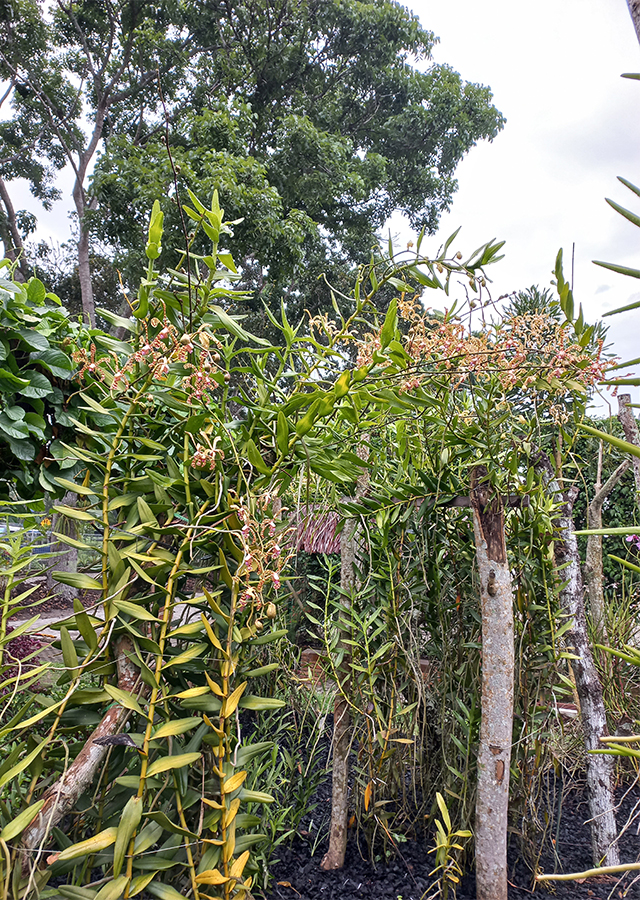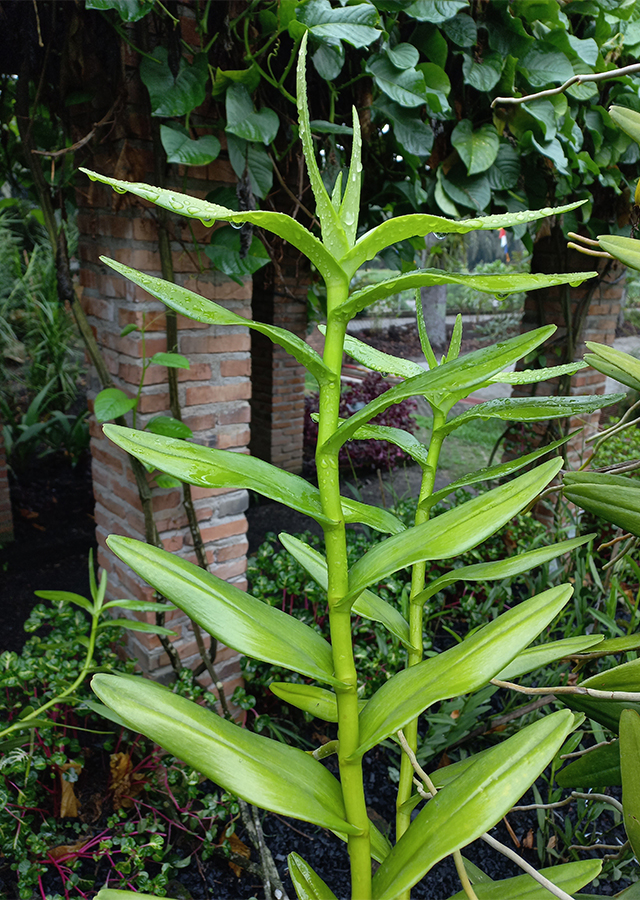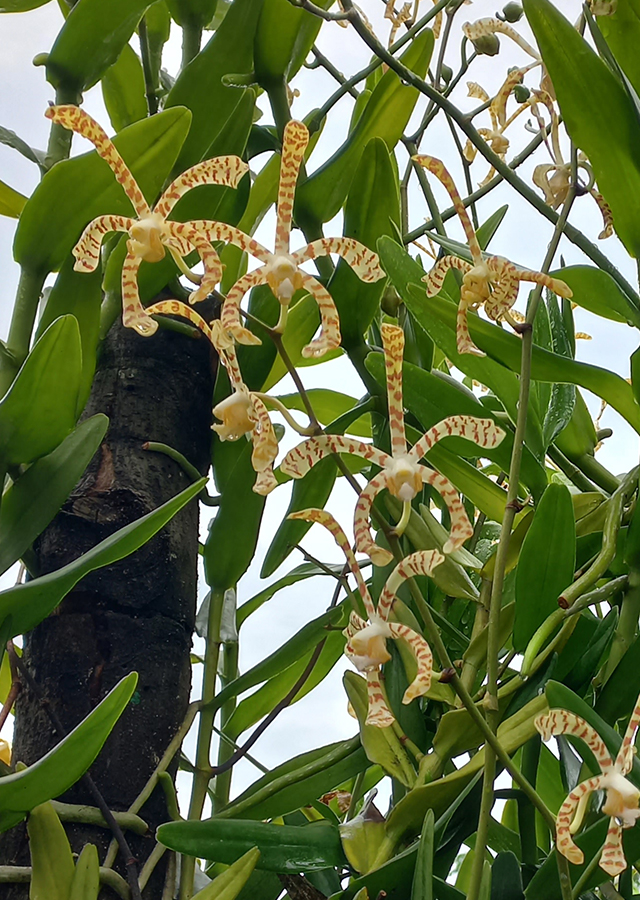Scorpion Orchid
Arachnis flos-aeris (L.) Rchb.f.
Orchidaceae
Location in our garden
Principal



Synonym
Aerides arachnites Sw.
Arachnis moschifera Blume
Epidendrum flos-aeris L.
Habitus
Orchid. Ground orchid, epiphytic, annual, more than 2 m long
Part Used
Sap
Growing Requirements
Full Sunshine
Habitat
Forest
Mountains
Rocky Areas
Terrestrial
Overview
The scorpion orchid is one of the native flora of Indonesia and is widespread in Sumatra, Kalimantan, Java, Bali and even the Malay Peninsula. This plant is classified as an ornamental plant, because it is unique in terms of its flower shape which is similar to a scorpion animal. Besides being cultivated as an ornamental plant, many people also cultivate this plant as a cut flower. Based on its function as a medicinal plant, this orchid turns out to have good health benefits.
Vernacular Names
No data found on this. Need further research.
Agroecology
Scorpion orchids can generally be found growing in the open in the lowlands, mountains, forests, sometimes in rocky areas, at an altitude of up to 1,000 m above sea level. In nature, this plant grows by creeping and attaching to tree trunks using its roots. Scorpion orchids love direct sunlight and can be planted in open areas.
Morphology
- Roots - has aerial roots that climb and roots that grow on the stem internodes randomly, the color of the roots is grayish white.
- Stems - has a monopodial growth type, the shape of the stem is erect, hard, slender and not bulbous. The stem extends upwards and its growth is not limited with 4-10 cm long segments (knuckles) on each stem. The stem is covered by a leaf sheath.
- Leaves - lanceolate, relatively fleshy so that it looks thicker and stiffer, the base of the leaves wraps around the stem, the length of the leaves on this orchid can reach up to 30 cm with a leaf width of 5 cm, the leaves are dark green.
- Flowers - At first glance it resembles a scorpion animal, has a flower stalk reaching 150 cm, branched. The sepals and petals are narrow, pale yellow-green in color and are characterized by broad, irregular purplish-brown or dark-brown stripes/spots. It gives off a distinctive and fragrant aroma, where the fragrance of this flower resembles the aroma of musk.
- Fruits - shaped capsule that is divided into six parts consisting of 3 carpels / fruit cavities. The fruit can reach a length of 10 cm.
Cultivation
Propagated by stem cuttings and tissue culture.
Chemical Constituents
Terpenoids and phenolics.
Traditional Medicinal Uses
- Relieves toothache, whooping cough (pertussis), inflammation of the respiratory tract (bronchitis).
- Has anticancer activity.
Part Used
Reference Sources
- Royal Botanic Gardens, Kew. Plants of the World Online: Arachnis flos-aeris (L.) Rchb.f. https://powo.science.kew.org/taxon/urn:lsid:ipni.org:names:617011-1. 16-08-22.
- Nugroho LH, Pratiwi R, Susandarini R, Wardoyo ERP, Megawati O, Handayani S. 2016. Isolation of Bioactive Compounds from Two Orchid Species and Preliminary Test of Their Cytotoxicity against T47D Breast Cancer Cells. Int. J. Pharmacognosy and Phytochem. Res. 8(1):150-155.
- Teoh E. S. 2016. Medicinal Orchids of Asia. Springer International Publishin AG Switszerland.
